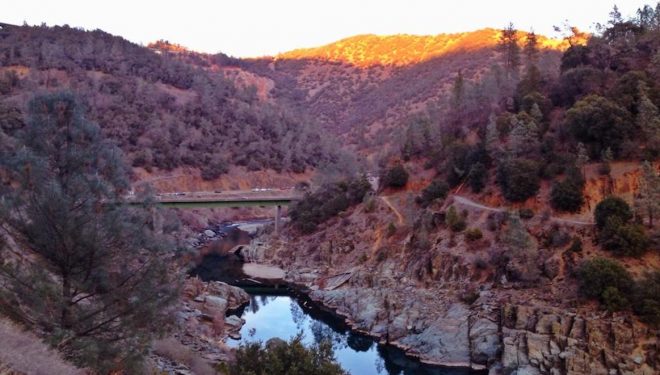
The California State Department of Water Resources (DWR) recently completed its multi‑phased prioritization of the state’s 515 groundwater basins and sub-basins. As a result, many basins are now required to comply with the mandates of California’s landmark Sustainable Groundwater Management Act (SGMA). By contrast, some basins are now left to decide whether they will voluntarily comply with SGMA.
Background
In 2009, California enacted legislation requiring DWR to evaluate the effectiveness of local groundwater basin monitoring systems and data across the State. In response to that legislation, DWR created the California Statewide Groundwater Elevation Monitoring (CASGEM) program, which included prioritizing all California basins and sub-basins and establishing monitoring and reporting requirements.
SGMA requires local agencies in all non-adjudicated, high- and medium-priority basins to establish local groundwater sustainability agencies (GSAs) and to develop and implement groundwater sustainability plans (GSPs). DWR utilized the 2014 CASGEM basin prioritization for the initial SGMA prioritization requirements, which resulted in the designation of 127 high-and medium-priority basins.
2019 Basin Prioritization Phases
The 2009 groundwater monitoring law, as amended by SGMA, requires DWR to consider multiple components in establish basin priorities, including: 1) The population overlying the basin or sub-basin; 2) The rate of current and projected growth of the population overlying the basin or sub-basin; 3) The number of public supply wells that draw from the basin or sub-basin; 4) The total number of wells that draw from the basin or sub-basin; 5) The irrigated acreage overlying the basin or sub-basin; 6) The degree to which persons overlying the basin or sub-basin rely on groundwater as their primary source of water; 7) Any documented impacts on the groundwater within the basin or sub-basin, including overdraft, subsidence, saline intrusion, and other water quality degradation and 7) Any other information determined to be relevant by DWR, including adverse impacts on local habitat and local streamflows.
SGMA further requires DWR to reassess groundwater basin prioritization any time it updates Bulletin 118 basin boundaries. In December 2016, DWR published Bulletin 118 – Interim Update 2016, which defined 517 groundwater basins and sub-basins in California. In May 2018, DWR released a draft prioritization for those basins and initiated a lengthy public comment period, during which time some local agencies requested a further review of basin boundary modifications. In response, DWR’s prioritization process occurred in two phases (referred to as SGMA 2019 Basin Prioritization Phase 1 and Phase 2).
SGMA 2019 Basin Prioritization Phase 1
The SGMA 2019 Basin Prioritization Phase 1 focused on the basins that were defined according to Bulletin 118 – Interim Update 2016 and not affected by the 2018 basin boundary modifications. In January 2019, DWR finalized the SGMA 2019 Basin Prioritization Phase 1 priorities for 458 basins.
SGMA 2019 Basin Prioritization Phase 2
SGMA 2019 Basin Prioritization Phase 2 (Phase 2) was completed in December 2019. Phase 2 prioritized the remaining 57 basins that included the 53 basins for which boundaries were modified and approved through the 2018 boundary modification process, two basins for which boundary changes were not approved, and two basins for which boundaries were established pursuant to statutory amendments to SGMA. In total, Phase 2 completed prioritization for all 515 California basins and sub-basins.
DWR reports that the SGMA 2019 Basin Prioritization followed the same technical process used in prior basin prioritization efforts, with certain updates to reflect statutory changes to SGMA. In conducting the SGMA 2019 Basin Prioritization, the following items were particularly drawn into focus: 1) Adverse impacts on local habitat and local streamflows; 2) Adjudicated areas; 3) Critically overdrafted basins; and 4) Groundwater-related transfers.
As with previous prioritization processes, DWR assigned points to each component of the analysis.
Point totals were determined and scaled, resulting in high-, medium-, low- or very-low priority designations. Phase 2 resulted in the following prioritizations: 1) High priority – 46 basins; 2) Medium priority – 48 basins; 3) Low priority – 11 basins; and 4) Very Low priority – 410 basins
According to DWR, the 94 basins and sub-basins now designated high- and medium-priority, in combination with adjudicated areas which have existing local groundwater management in place, collectively account for 98 percent of the pumping (20 million acre-feet), 83 percent of the population (25 million Californians), and 88 percent of all irrigated acres (6.7 million acres) within the California’s groundwater basins. SGMA implementation is already well underway, and in some cases nearly complete, for many of those basins that were already identified as high- and medium-priority.
Basins previously ranked low- or very-low priority that are now are prioritized as high- or medium-priority are required to form GSAs within two years and develop their GSPs within five years (or submit a qualifying GSP alternative as provided in SGMA).
Basins previously prioritized as high- or medium-priority that are now low- or very low-priority are not required to form a GSA or prepare a GSP. These basins are, however, still encouraged by DWR to form GSAs and develop GSPs and to develop and or update existing local groundwater management plans.
Reports and Tools
DWR issued a report detailing the SGMA 2019 Basin Prioritization, entitled Sustainable Groundwater Management Act 2019 Basin Prioritization. The report explains DWR’s process, criteria and results. The report, along with other SGMA 2019 Basin Prioritization information, including maps and tools, is available on DWR’s website at: https://water.ca.gov/Programs/Groundwater-Management/Basin-Prioritization.
Conclusion and Implications
SGMA implementation continues to develop and evolve throughout California. At nearly the same moment some basins became subject to SGMA’s mandates through the SGMA 2019 Basin Prioritization, GSPs are coming due in January 2020 for the approximately twenty basins that have been designated as “critically overdrafted.” By contrast, some basins previously required to establish GSAs and develop GSPs are now left to decide whether to do so voluntarily and how to address previously awarded grant funding. One thing is certain: groundwater management in California will look and function much differently over the next 20 years.
(Derek Hoffman, Michael Duane Davis)




